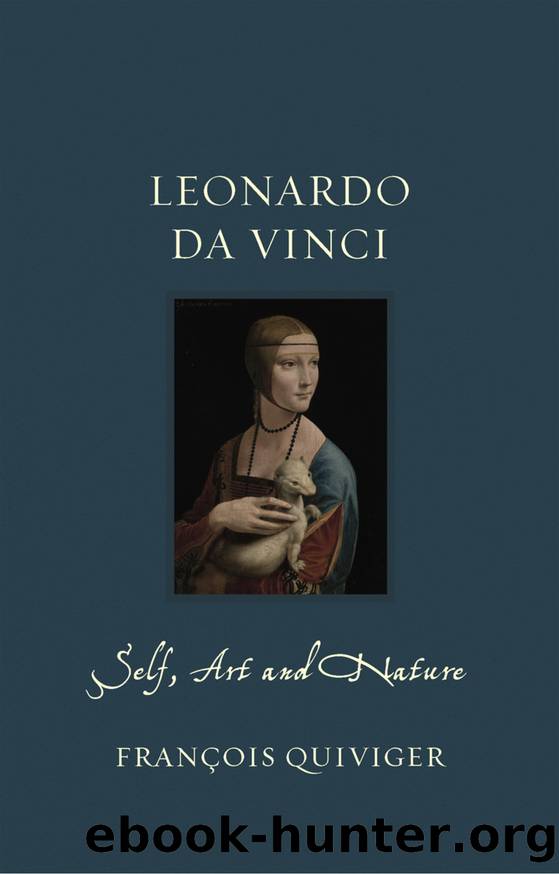Leonardo da Vinci by François Quiviger

Author:François Quiviger
Language: eng
Format: epub
Publisher: Reaktion Books
36 Leonardo da Vinci, Cesare Borgia, c. 1502, red chalk.
the painter or draughtsman must remain solitary, and particularly when intent on those studies and reflections which will constantly rise up before his eye, giving materials to be well stored in the memory. While you are alone you are entirely your own [master] and if you have one companion you are but half your own . . . And if you have many companions you will fall deeper into the same trouble.2
THE ARTIST AT WAR
From about 1500, Leonardo collaborated intermittently with Cesare Borgia (1475–1507), the flamboyant ruler of Emilia-Romagna, made Duke of Valentinois by Louis XII, whose niece Charlotte d’Albret he married in 1499, and General of the Papal Armies by his father, Pope Alexander VI. On entering Milan with Louis in October 1499, Cesare saw The Last Supper, and he must also have heard of Leonardo’s expertise as an architect and military engineer. He officially hired him sometime in 1502, for he refers to him as his ‘familiar, architect and general engineer’ in a document dated 18 May 1502.3
Shrewd, flamboyant, charismatic, ruthless and brutal, like a Mafia boss, Cesare Borgia was one of the models for Niccolò Machiavelli’s Prince (1532). In a document dated 18 August 1502 Cesare conferred on Leonardo the title Dilectissimo familiare – literally ‘a most appreciated member of his close entourage’ – confirming that by then Leonardo’s presence, conversation and advice were as sought after as his multiple skills.4 During this intense period of territorial conquests Cesare had vital need of a military engineer, and not of a painter or sculptor. The period of Leonardo’s employment corresponds to those intense times when Cesare’s armies were conquering large parts of central Italy in the hope of establishing a territory that would last beyond the death of his ageing father.
A Latin poem by Francesco Perulo in praise of Cesare’s campaigns mentions the foldable bridges Leonardo advertised in his letter to Ludovico Sforza, and so does his friend the mathematician Luca Pacioli.5 These structures were ideal to ensure the prompt deployment of armies over natural obstacles (illus. 37). Documents also confirm that Leonardo inspected fortifications. Most critically, he drew detailed maps thanks to which Cesare’s captains could plan an efficient siege and plot successful assaults. Furthermore, the accounts of Cesare’s winter campaign against Piombino include allusion to war machines which may have been produced or improved under Leonardo’s supervision or following his plans, including explosive cannonballs (illus. 38).6 His experience in bronze casting and his recent interest in ballistics had certainly made him aware of the potential use of the toxic and sometimes lethal properties of smoke. In his letter to Ludovico Sforza he speaks of portable cannon that would shoot explosive balls ‘the smoke of which gives great horror, severe damages and confusion to the enemy’.7 According to the historian Pascal Brioist, Leonardo’s project of a movable assault tower was also built, but unsuccessfully.8
Download
This site does not store any files on its server. We only index and link to content provided by other sites. Please contact the content providers to delete copyright contents if any and email us, we'll remove relevant links or contents immediately.
Papillon by Henry Charrière(792)
Watercolor With Me in the Forest by Dana Fox(588)
The Story of the Scrolls by The Story of the Scrolls; the M(555)
This Is Modern Art by Kevin Coval(456)
A Theory of Narrative Drawing by Simon Grennan(453)
Frida Kahlo by Frida Kahlo & Hayden Herrera(444)
Boris Johnson by Tom Bower(441)
Banksy by Will Ellsworth-Jones(434)
AP Art History by John B. Nici(428)
Van Gogh by Gregory White Smith(425)
Draw More Furries by Jared Hodges(422)
The Art and Science of Drawing by Brent Eviston(420)
Glittering Images: A Journey Through Art From Egypt to Star Wars by Camille Paglia(416)
Scenes From a Revolution by Mark Harris(411)
War Paint by Woodhead Lindy(411)
100 Greatest Country Artists by Hal Leonard Corp(390)
Ecstasy by Eisner.;(386)
Young Rembrandt: A Biography by Onno Blom(371)
Theater by Rene Girard(354)
